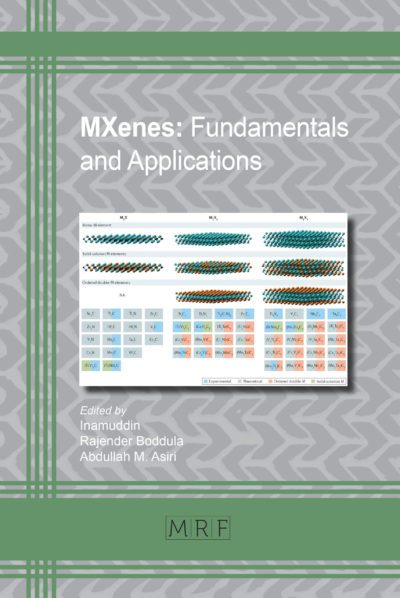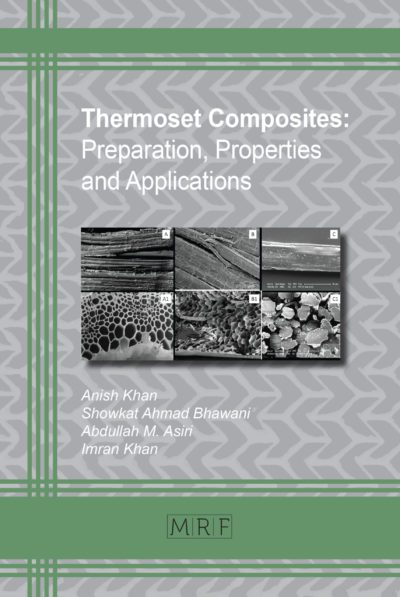Modeling of 3D fluid-structure-interaction during in-situ hybridization of double-curved fiber-metal-laminates
POPPE Christian, KRUSE Moritz, KÄRGER Luise
download PDFAbstract. Fiber-metal-laminates (FML) provide excellent fatigue behavior, damage-tolerant properties, and inherent corrosion resistance. A 2017-developed single-step process that combines deep-drawing with simultaneous infiltration (in-situ-hybridization) yields promising results. However, Fluid-Structure-Interaction (FSI) between the hybrid stack and the fluid pressure complicated the defect-free processing of double-curved parts. In this work, a Finite Element (FE) simulation approach for modeling the in-situ hybridization of FMLs is expanded to incorporate a both-sided (strong) FSI, aiming to facilitate apriori virtual support for process- and part development. Using Terzaghi’s effective stress formulation, the proposed framework can predict metal sheet buckling and resin accumulation resulting from local fluid pressure during infiltration of the textile interlayers on part level. Different conditions are simulated, outlining the high relevance of considering strong FSI during process simulation. The part-level results are compared with experimental findings. Modeling challenges are discussed, along with suggested future enhancements of the simulation approach.
Keywords
Composites, Process Simulation, Infiltration, Deep Drawing, FML, FSI, FEA
Published online 4/19/2023, 12 pages
Copyright © 2023 by the author(s)
Published under license by Materials Research Forum LLC., Millersville PA, USA
Citation: POPPE Christian, KRUSE Moritz, KÄRGER Luise, Modeling of 3D fluid-structure-interaction during in-situ hybridization of double-curved fiber-metal-laminates, Materials Research Proceedings, Vol. 28, pp 219-230, 2023
DOI: https://doi.org/10.21741/9781644902479-24
The article was published as article 24 of the book Material Forming
![]() Content from this work may be used under the terms of the Creative Commons Attribution 3.0 license. Any further distribution of this work must maintain attribution to the author(s) and the title of the work, journal citation and DOI.
Content from this work may be used under the terms of the Creative Commons Attribution 3.0 license. Any further distribution of this work must maintain attribution to the author(s) and the title of the work, journal citation and DOI.
References
[1] Z. Ding, H. Wang, J. Luo, N. Li, A review on forming technologies of fibre metal laminates, Int. J. Lightweight Mater. Manuf. 4 (2021) 110-126. https://doi.org/10.1016/j.ijlmm.2020.06.006
[2] S. Krishnakumar, Fiber Metal Laminates – The Synthesis of Metals and Composites, Mater. Manuf. Process. 9 (1994) 295-354. https://doi.org/10.1080/10426919408934905
[3] A. Asundi, A.Y. Choi, Fiber metal laminates: an advanced material for future aircraft, J. Mater. Process. Technol. 63 (1997) 384-394. https://doi.org/10.1016/S0924-0136(96)02652-0
[4] M.R. Sadeghi, A.A.A. Jeddi, S. Shaikhzadeh Najar, Theoretical and ezperimental analysis of bending rigidity of plain and twill woven fabrics, J. Text. Inst. 108 (2017) 1700. https://doi.org/10.1080/00405000.2017.1280760
[5] T. Sinmazçelik, E. Avcu, M.Ö. Bora, O. Çoban, A review: Fibre metal laminates, background, bonding types and applied test methods, Mater. Design 32 (2011) 3671-3685. https://doi.org/10.1016/j.matdes.2011.03.011
[6] M. Smolnicki, G. Lesiuk, S. Duda, A.M.P. de Jesus, A Review on Finite-Element Simulation of Fibre Metal Laminates, Arch. Computat. Methods Eng. 1 (2022). https://doi.org/10.1007/s11831-022-09814-8
[7] H. Blala, L. Lang, S. Khan, S. Alexandrov, Experimental and numerical investigation of fiber metal laminate forming behavior using a variable blank holder force Prod. Eng. Res. Devel. 14 (2020) 509. https://doi.org/10.1007/s11740-020-00974-9
[8] H. Blala, L. Lang, L. Li, S. Alexandrov, Deep drawing of fiber metal laminates using an innovative material design and manufacturing process, Compos. Communic. 23 (2021) 100590. https://doi.org/10.1016/j.coco.2020.100590
[9] L. Li, L. Lang, B. Hamza, Q. Zhang, Effect of hydroforming process on the formability of fiber metal laminates using semi-cured preparation, Int. J. Adv. Manuf. Technol. 107 (2020) 3909–3920. https://doi.org/10.1007/s00170-020-05281-2
[10] C.T. Poppe, H.O. Werner, M. Kruse, H. Chen, N. Ben Khalifa, F. Henning, L. Kärger, Towards 3D Process Simulation for In Situ Hybridization of Fiber-Metal-Laminates (FML), Key Eng. Mat.926 (2022) 1399-1412. https://doi.org/10.4028/p-cr2tco
[11] J. Sinke, Manufacturing of GLARE Parts and Structures, Appl. Compos. Mater. 10 (2003) 293–305. https://doi.org/10.1023/A:1025589230710
[12] T. Mennecart, S. Gies, N. Ben Khalifa, A.E. Tekkaya, Analysis of the Influence of Fibers on the Formability of Metal Blanks in Manufacturing Processes for Fiber Metal Laminates, J. Manuf. Mater. Process. 3 (2019) 2. https://doi.org/10.3390/jmmp3010002
[13] B.-A. Behrens, S. Hübner, N. Grbic, M. Micke-Camuz, T. Wehrhane, A. Neumann, Forming and Joining of Carbon-Fiber-Reinforced Thermoplastics and Sheet Metal in One Step, Procedia Eng. 183 (2017) 227-232.
[14] Y. Lu, Y. Li, Y. Zhang, L. Dong, Manufacture of Al/CF/PEEK curved beams by hot stamping forming process, Mater. Manuf. Process. 1 (2022) 1597-1609. https://doi.org/10.1080/10426914.2022.2032140
[15] M. Gerdes, Experimental mold filling analysis and investigation of the forming behavior during deep drawing of fiber-metal laminates in the in-situ hybridization process, Master Thesis, Lueneburg, 2022.
[16] P. Boisse, R. Akkerman, P. Carlone, L. Kärger, S.V. Lomov, J.A. Sherwood, Advances in composite forming through 25 years of ESAFORM, Int. J. Mater. Form. 15(3) (2022). https://doi.org/10.1007/s12289-022-01682-8
[17] C.T. Poppe, C. Krauß, F. Albrecht, L. Kärger, A 3D process simulation model for wet compression moulding, Compos. Part A: Appl. Sci. Manuf. 145 (2021) 106379. https://doi.org/10.1016/j.compositesa.2021.106379
[18] C.T. Poppe, D. Dörr, F. Henning, L. Kärger, Experimental and numerical investigation of the shear behaviour of infiltrated woven fabrics Compos. Part A: Appl. Sci. Manuf. 114 (2018) 327-337. https://doi.org/10.1016/j.compositesa.2018.08.018
[19] F. Schäfer, H.O. Werner, F. Henning, L. Kärger, Compos. Part A: Appl. Sci. Manuf. 165 (2022) 107323. https://doi.org/10.1016/j.compositesa.2022.107323
[20] C.T. Poppe, Process simulation of wet compression moulding for continuous fibre-reinforced polymers, KIT Scientific Publishing, Karlsruhe, 2022.
[21] C.W. MacMinn, E.R. Dufresne, J.S. Wettlaufer, Large deformations of a soft porous material, Phys. Rev. Appl. 5 (2016) 044020. https://doi.org/10.1103/PhysRevApplied.5.044020
[22] C.T. Poppe, F. Albrecht, C. Krauß, L. Kärger, Towards numerical prediction of flow-induced fiber displacements during wet compression molding (WCM), Paper presented at ESAFORM 2021. 24th International Conference on Material Forming, Liège, Belgique, 2021. https://doi: 10.25518/esaform21.1938
[23] T. Trzepiecinski, H. Lemu, Effect of Computational Parameters on Springback Prediction by Numerical Simulation, Metals 7 (2017) 380. https://doi.org/10.3390/met7090380
[24] M. Kruse, H.O. Werner, H. Chen, T. Mennecart, W.V. Liebig, K.A. Weidenmann, N. Ben Khalifa, Investigation of the friction behavior between dry/infiltrated glass fiber fabric and metal sheet during deep drawing of fiber metal laminates, Prod. Eng. Res. Devel. 17 (2022) 37-46. https://doi.org/10.1007/s11740-022-01141-y














